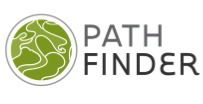An outline of trade flows of legally and illegally extracted natural resources from fragile states: The case of coltan in the Kivus, DRC

An outline of trade flows of legally and illegally extracted natural resources from fragile states: The case of coltan in the Kivus, DRC
The Democratic Republic of Congo (DRC) is a good example of the "paradox of plenty" theory according to which countries and regions with an abundance of natural resources, especially non-renewable resources such as minerals and fuels, tend to have less economic growth and worse development outcomes than countries with fewer resources.
The DRC has an enormous amount of natural resources such as minerals (tin, coltan, diamond, copper, cobalt, uranium, zinc, gold and nickel), energy (oil, methane, gas and high potential hydraulic and solar energy), forests (timber and non wood products including medicinal plants and wildlife) and water. This makes the DRC one of the richest African countries in terms of natural resources.
Download ( PDF - www.envirosecurity.org )
| Author(s) | Géraud de Ville |
| Publisher(s) | Institute for Environmental Security |
| Place published | Brussels |
| Date / Journal Vol No. | December 2009 |
| Pages | 7 |
Subjects
ENE Energy
FOR Forests
MIN Mining / Minerals
NTR Natural Resources
TRA Trade
WAT Water / Sanitation
WLD Wildlife
Scope Areas
Democratic Republic of Congo